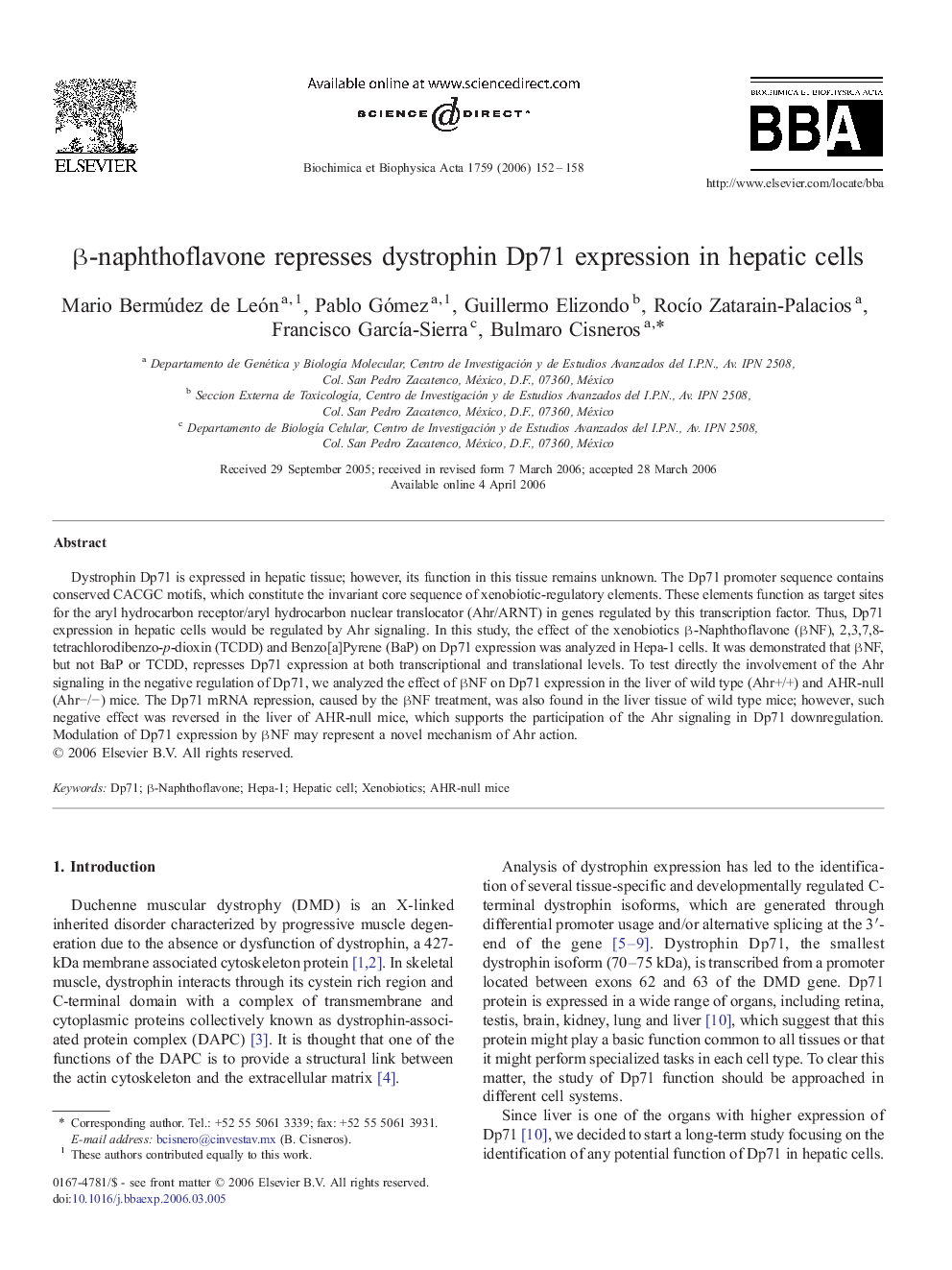| Article ID | Journal | Published Year | Pages | File Type |
|---|---|---|---|---|
| 1947246 | Biochimica et Biophysica Acta (BBA) - Gene Structure and Expression | 2006 | 7 Pages |
Dystrophin Dp71 is expressed in hepatic tissue; however, its function in this tissue remains unknown. The Dp71 promoter sequence contains conserved CACGC motifs, which constitute the invariant core sequence of xenobiotic-regulatory elements. These elements function as target sites for the aryl hydrocarbon receptor/aryl hydrocarbon nuclear translocator (Ahr/ARNT) in genes regulated by this transcription factor. Thus, Dp71 expression in hepatic cells would be regulated by Ahr signaling. In this study, the effect of the xenobiotics β-Naphthoflavone (βNF), 2,3,7,8-tetrachlorodibenzo-p-dioxin (TCDD) and Benzo[a]Pyrene (BaP) on Dp71 expression was analyzed in Hepa-1 cells. It was demonstrated that βNF, but not BaP or TCDD, represses Dp71 expression at both transcriptional and translational levels. To test directly the involvement of the Ahr signaling in the negative regulation of Dp71, we analyzed the effect of βNF on Dp71 expression in the liver of wild type (Ahr+/+) and AHR-null (Ahr−/−) mice. The Dp71 mRNA repression, caused by the βNF treatment, was also found in the liver tissue of wild type mice; however, such negative effect was reversed in the liver of AHR-null mice, which supports the participation of the Ahr signaling in Dp71 downregulation. Modulation of Dp71 expression by βNF may represent a novel mechanism of Ahr action.
